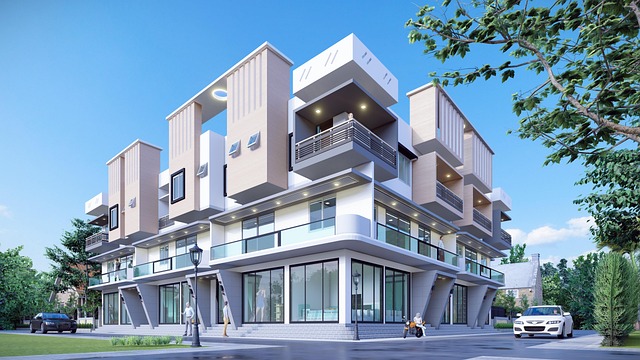3D modeling and rendering harness texturing, shading, ray tracing, and PBR to create lifelike visuals. Texturing adds intricate details like wood grain or fabric patterns via UV mapping. Shading techniques mimic natural light, enabling reflections, refractions, and shadows. Ray tracing recreates light behavior for depth, while PBR simulates material properties. Advanced software and high-res textures further enhance photorealism in digital art.
“Unleash the power of realistic visual effects in 3D modeling and rendering with detailed texturing and shading. This comprehensive guide delves into the intricacies of essential texturing techniques, exploring various shading methods for authentic lighting. Learn advanced rendering techniques to add depth and detail to surfaces, and discover powerful tools and software that elevate photorealism. Enhance your skills in 3D modeling and rendering, creating visually stunning content.”
Understanding Essential Texturing Techniques in 3D Modeling
In the realm of 3D modeling and rendering, texturing plays a pivotal role in bringing digital creations to life by adding depth, detail, and realism. Understanding essential texturing techniques is crucial for achieving visually stunning results. One fundamental approach involves mapping images onto 3D models, allowing textures to enhance surface details like wood grain, fabric patterns, or environmental elements such as water and sky reflections.
This process requires a keen eye for composition and an understanding of UV mapping, which efficiently projects textures across surfaces. By mastering these techniques, artists can elevate their digital artwork, making it appear more lifelike and immersive. Texturing further comes alive through shading, where strategic lighting and material properties simulate reflections, refractions, and shadows, adding another layer of realism to the 3D modeling and rendering process.
Shading Methods for Creating Realistic Lighting Effects
In the realm of 3D modeling and rendering, achieving realistic lighting effects is a cornerstone of creating immersive visual experiences. Shading plays a pivotal role in this process, enabling artists to mimic natural light interactions with surfaces. Two primary methods dominate this technique: vertex shading and pixel (fragment) shading. Vertex shading involves calculating lighting at the level of vertices, which can efficiently handle uniform lighting conditions. However, for more intricate scenes with varying surface orientations, pixel shading becomes indispensable.
Pixel shading allows for detailed manipulation of light across each individual pixel, resulting in highly accurate reflections, refractions, and shadows. This method is particularly crucial when rendering complex 3D models or environments. By applying per-pixel calculations, artists can achieve subtleties like diffused lighting, specular highlights, and ambient occlusion, significantly enhancing the overall realism of the rendered image.
Advanced Rendering: Adding Depth and Detail to Surfaces
In the realm of 3D modeling and rendering, advanced techniques like ray tracing and physically based rendering (PBR) take visual effects to the next level. Ray tracing simulates light as it bounces off objects in a scene, accurately capturing reflections, refractions, and soft shadows. This method adds depth and realism by recreating the intricate interplay of light and surface textures.
PBR, on the other hand, focuses on creating realistic materials by considering their physical properties. It models how light interacts with different surfaces, enabling artists to achieve complex effects like metalic sheen, roughness, and subsurface scattering. By combining these advanced rendering techniques with meticulous texturing and shading practices, creators can produce visually stunning 3D assets that transport viewers into immersive digital landscapes.
Tools and Software for Achieving Photorealism
Achieving photorealism in digital art requires a robust set of tools and software designed for detailed texturing and shading. 3D modeling and rendering software like Blender, Autodesk Maya, and 3ds Max empower artists to create complex geometry and apply intricate material properties. These programs offer a wide range of shaders and texture mapping techniques, from PBR (Physically Based Rendering) pipelines that mimic real-world materials to custom nodal networks allowing for creative control over lighting and surface interactions.
The right software also facilitates access to vast libraries of high-resolution textures, enabling artists to add realistic details like imperfections, imperfections, and subtle variations in material appearance. Advanced rendering engines within these platforms further enhance visual fidelity by simulating global illumination, ambient occlusion, and other physical phenomena, resulting in images that closely mirror reality.
In the realm of 3D modeling and rendering, achieving photorealism involves a combination of understanding essential texturing techniques, mastering shading methods, leveraging advanced rendering techniques, and utilizing suitable tools and software. By delving into these aspects, artists can create surfaces that not only look realistic but also capture the intricate details and lighting effects seen in the physical world. With continuous advancements in technology, the possibilities for creating indelible visual experiences through 3D modeling and rendering are limited only by our imagination.
